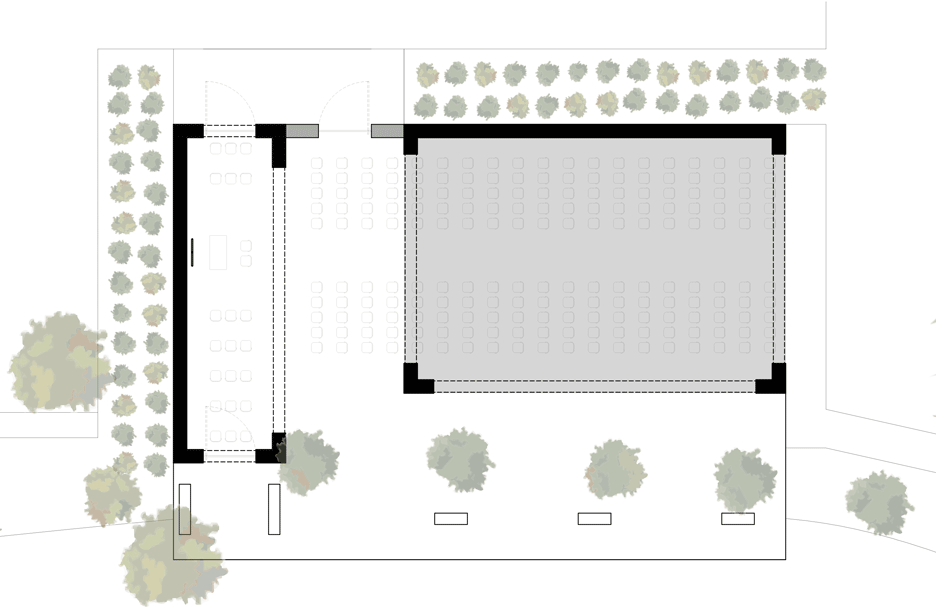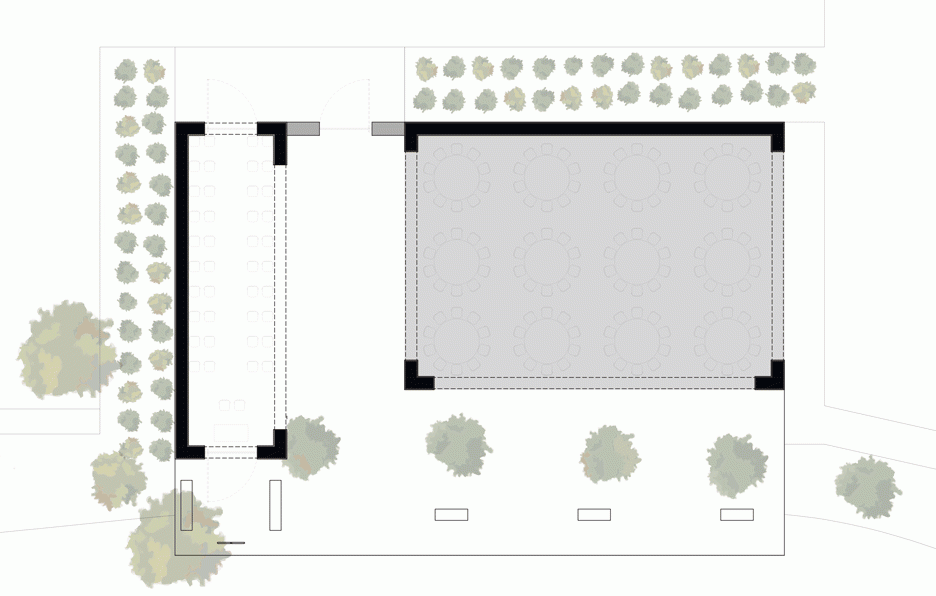Estudio ALA completes terracotta chapel at a Mexican tequila factory
Estudio ALA created this open-air chapel with a tall brick tower for staff at a tequila factory in the Mexican countryside (+ slideshow).
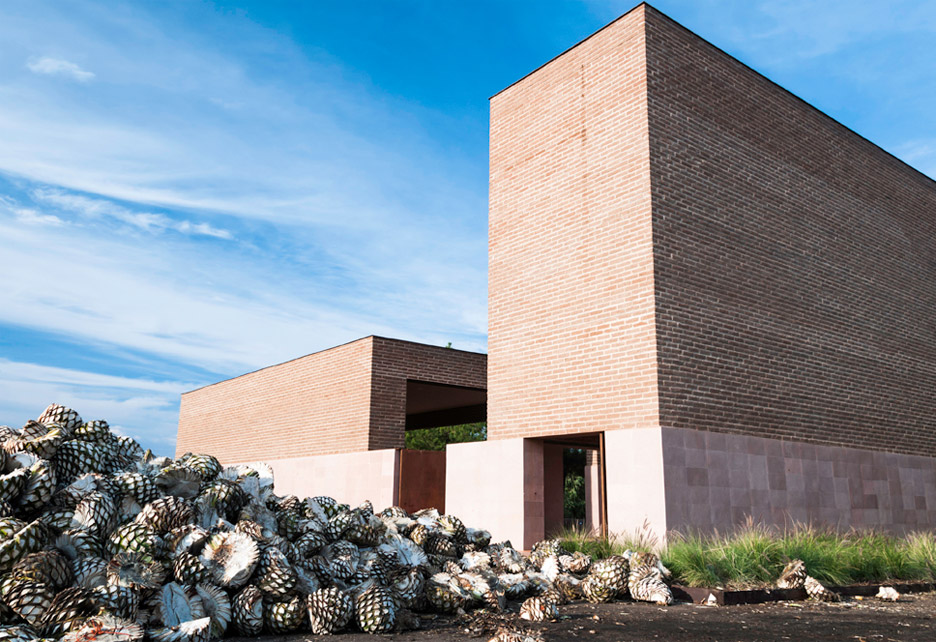
The Guadalajara-based architects designed the Centinela Chapel for the Tequila Centinela drinks factory in Arandas, in the western state of Jalisco.
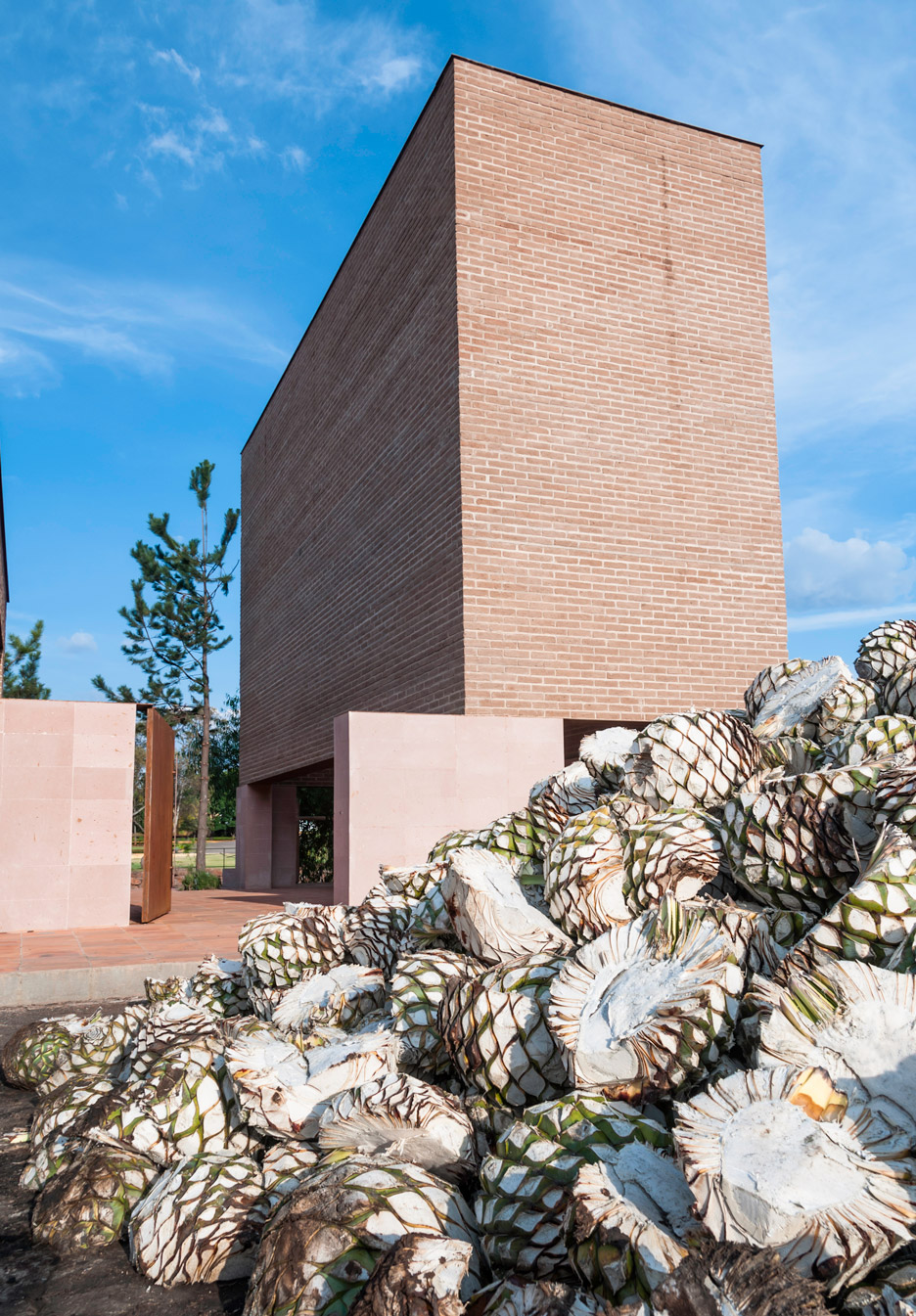
The chapel stands on a wide platform overhanging a lake and is surrounded by fields of agave plants – the principle ingredient in tequila. Piles of uprooted plants are heaped outside the weathering-steel chapel gates.
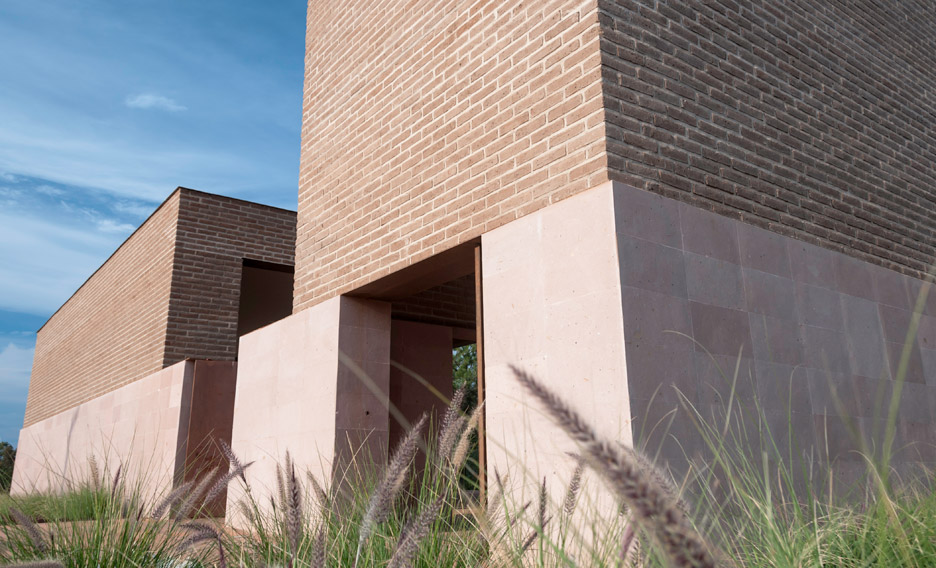
"The chapel is found inside a tequila factory, located in the northeast of the state of Jalisco – known to be one of the most religious areas in the country and one with the most outstanding contemporary Mexican culture," explained the architects.
"This spiritual and social space is a reinterpretation of the mixed-use spaces that exist in older haciendas and houses of the region, where people used to have a chapel or oratory in their own houses."
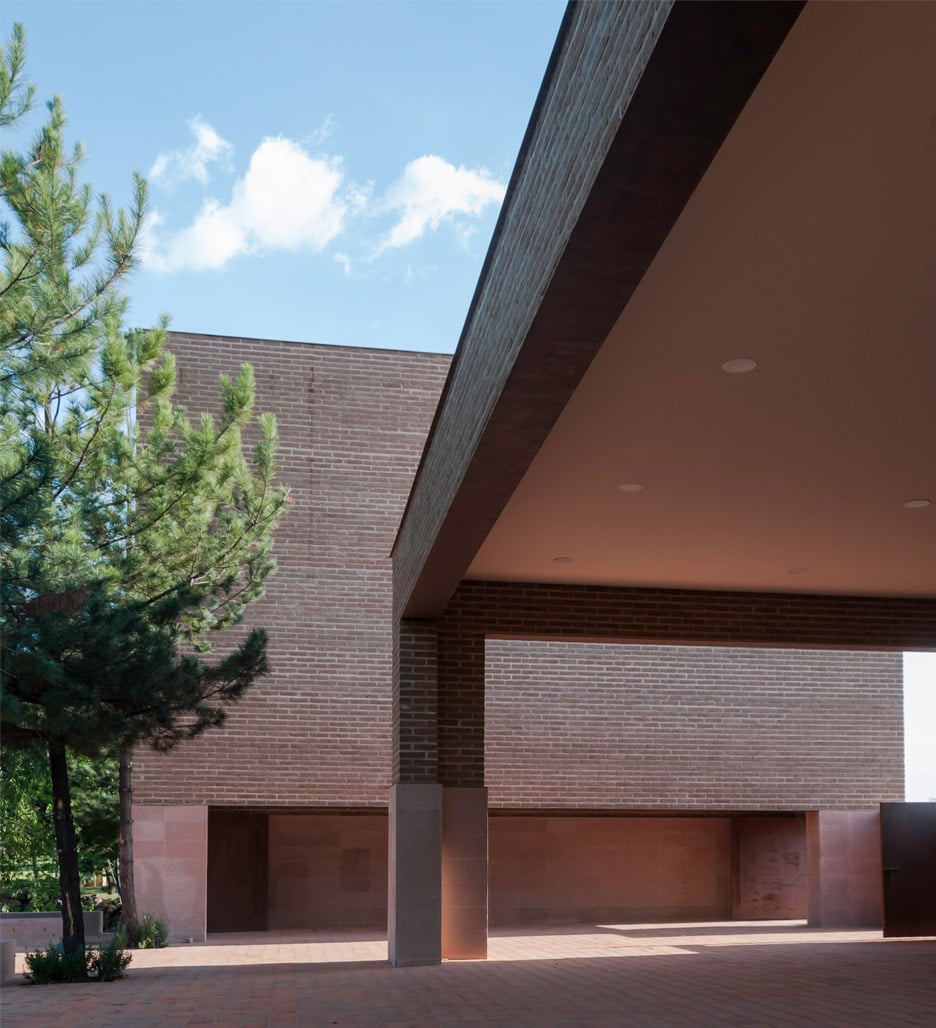
Services are conducted in an outdoor courtyard, but worshippers can take cover from the sun under a hollow tower made from pink terracotta tiles and unbaked brick. These materials were selected to help the building blend with the local architecture.
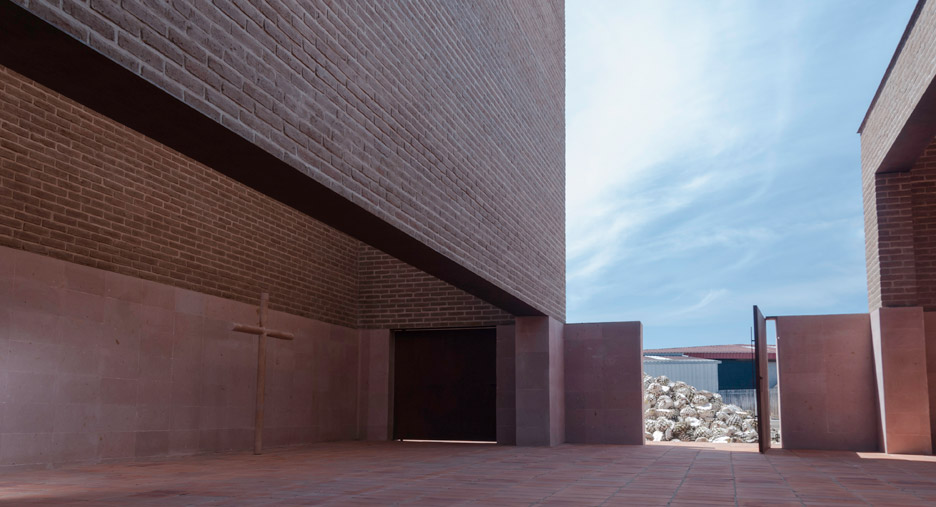
A shorter brick shelter stands on the other side of the courtyard and together the volumes frame views of the sky and a nearby lake.
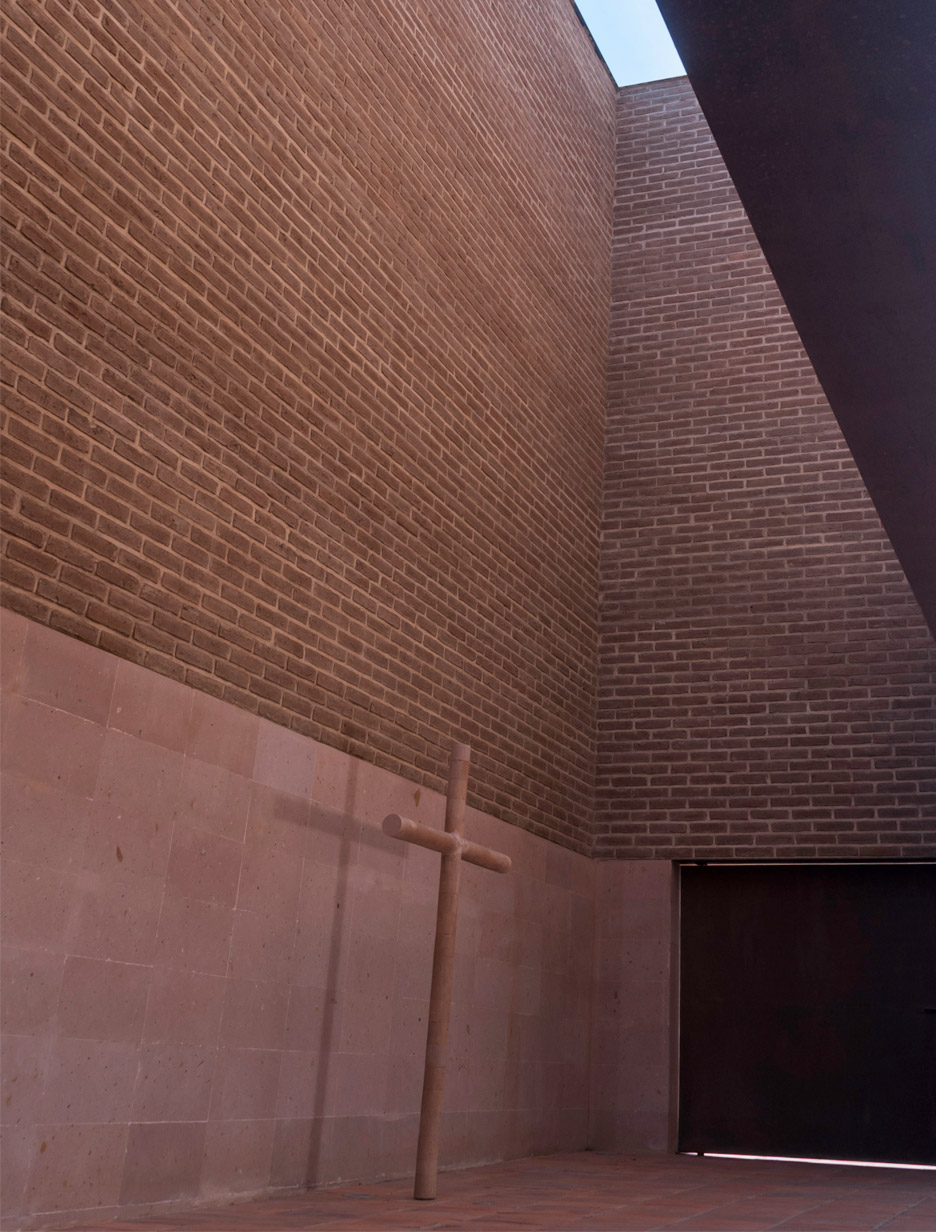
"The tall dominating volume shelters the visitor and frames the sky with its solid and strong presence, allowing light to cast strong and defined shadows into its interior volume, emphasising a spiritual experience," said the studio.
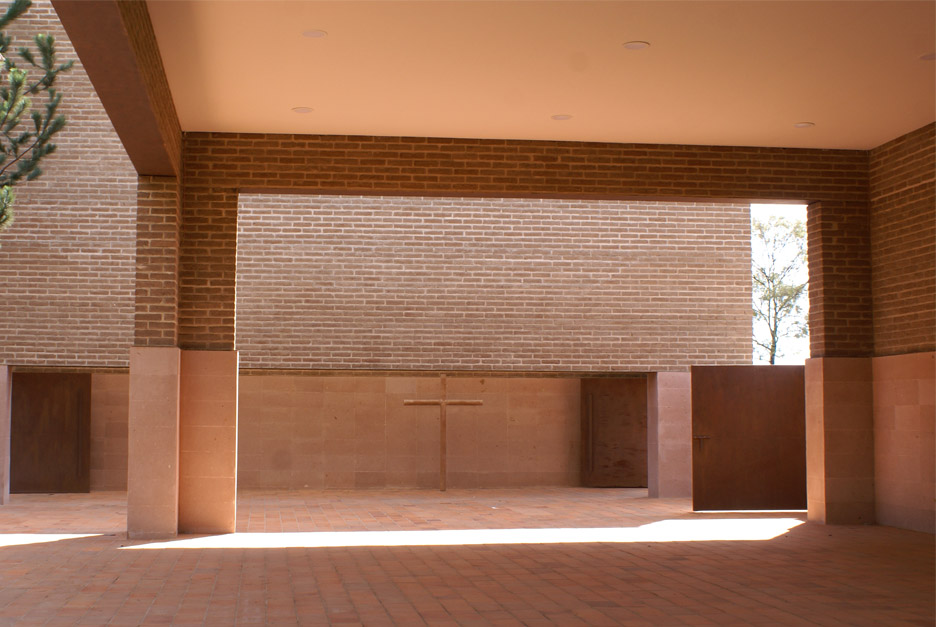
Closed walls to the south also help to shade the courtyard from the strong sun, and provide privacy for worshipers.
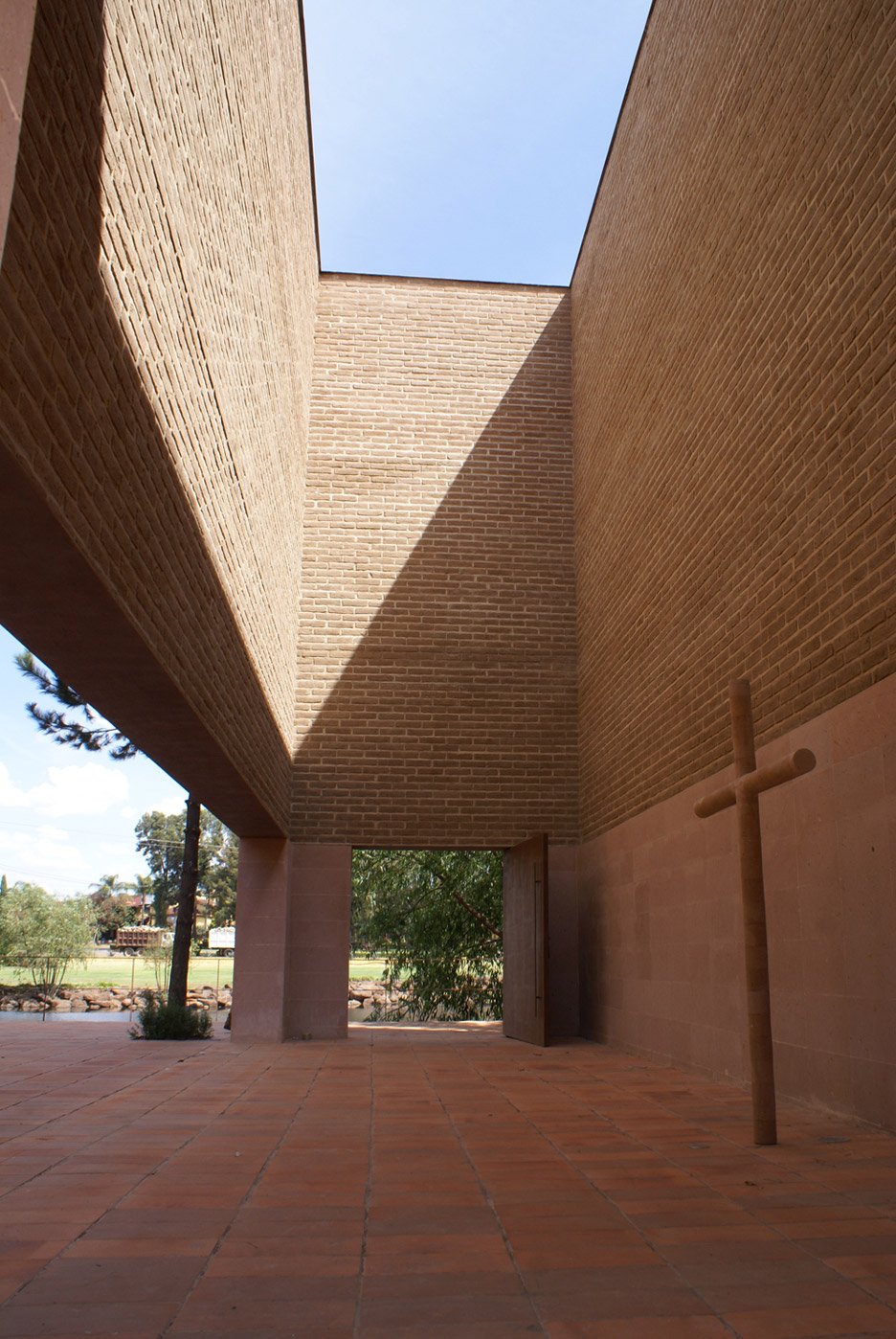
The wide but short entrance gates are designed to give the chapel a human scale, explained the architects. "The low height of its main entrance opening underlines the feeling of intimacy and sanctity," they said.
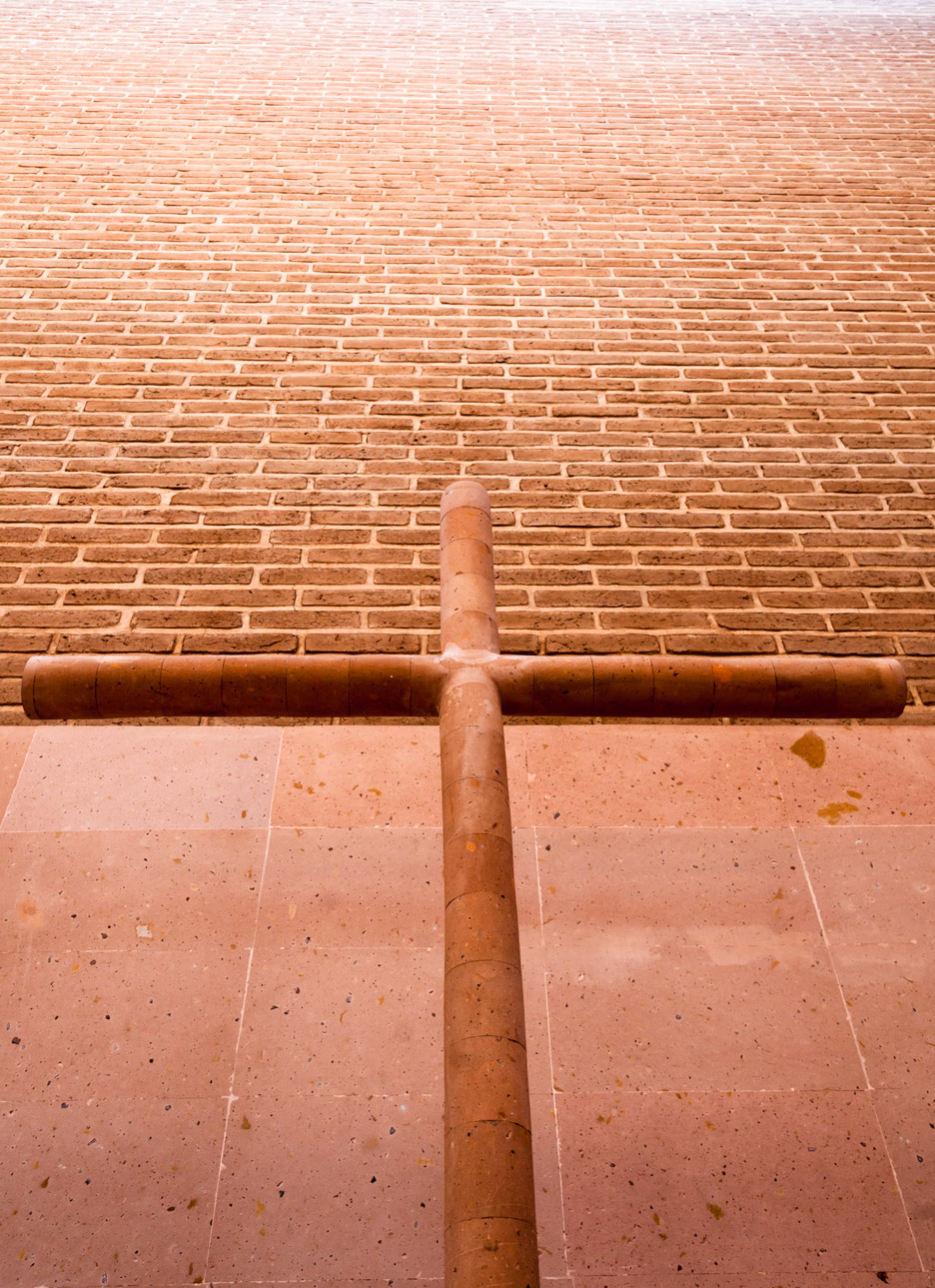
"We intended to create a sensory interaction between spaces, dissolving the edges between the interior and exterior, protected and connected to nature."
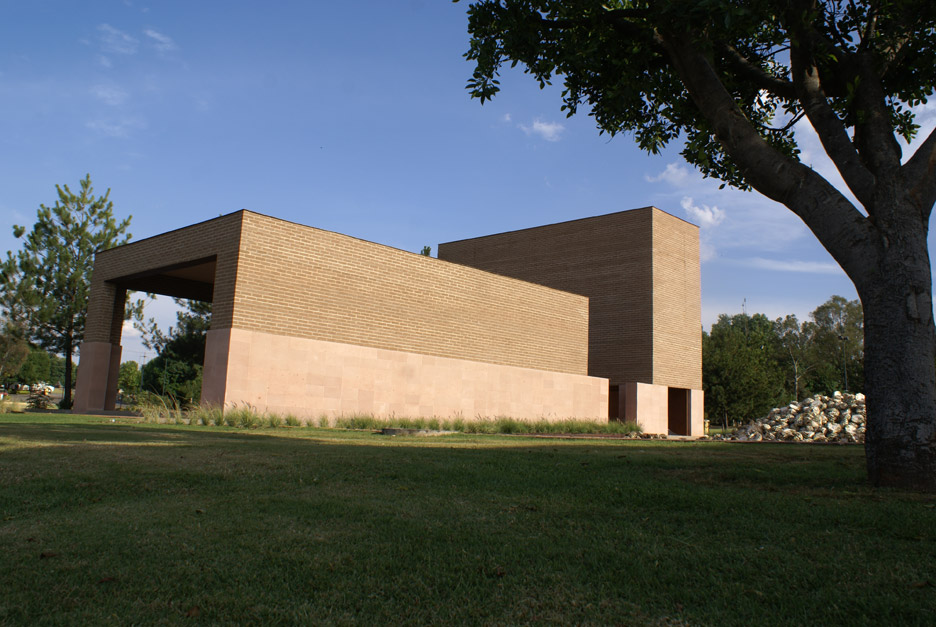
The gates can be opened into the factory yard to increase capacity and a slender terracotta cross – the only decoration in the space – can be relocated.
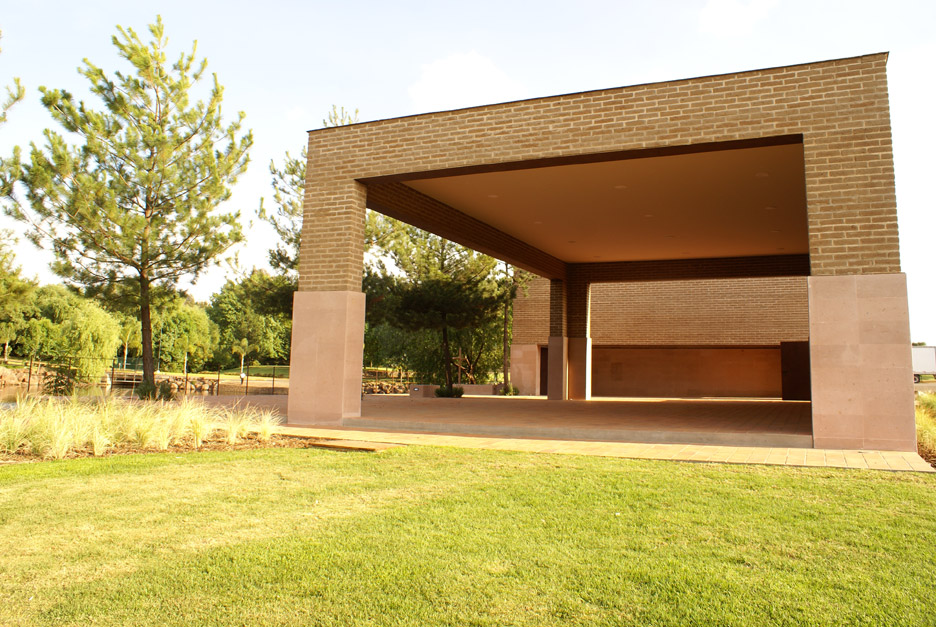
"These spaces can be separated depending on the occasion and the area needed for the religious ceremony; sometimes being as flexible as to allow to triple their capacity into the adjacent spaces," said the architects.
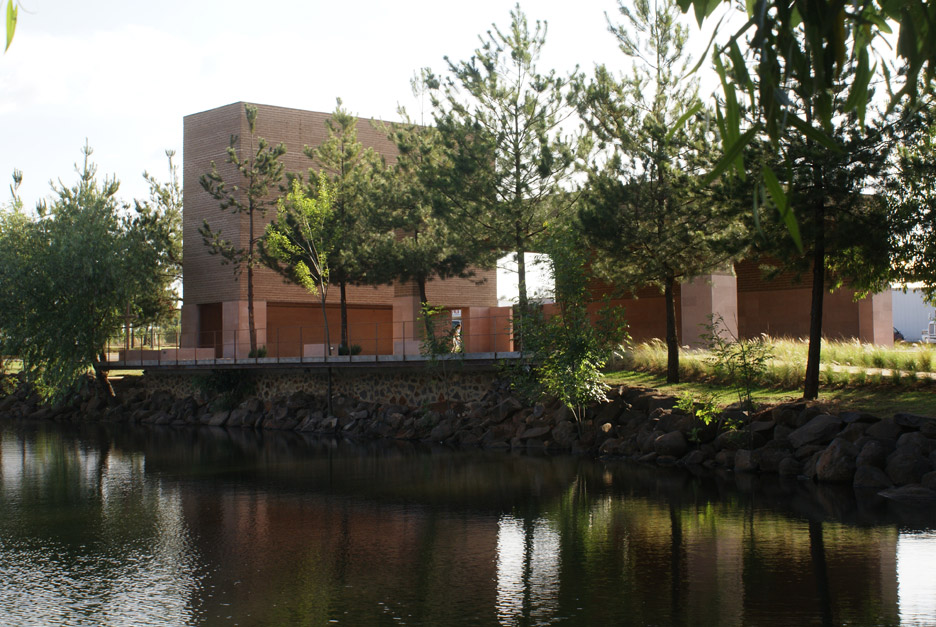
A terracotta path connects the factory and chapel, allowing workers to admire views of the lake and field on the way to services.
Photography by Víctor Orendain.
